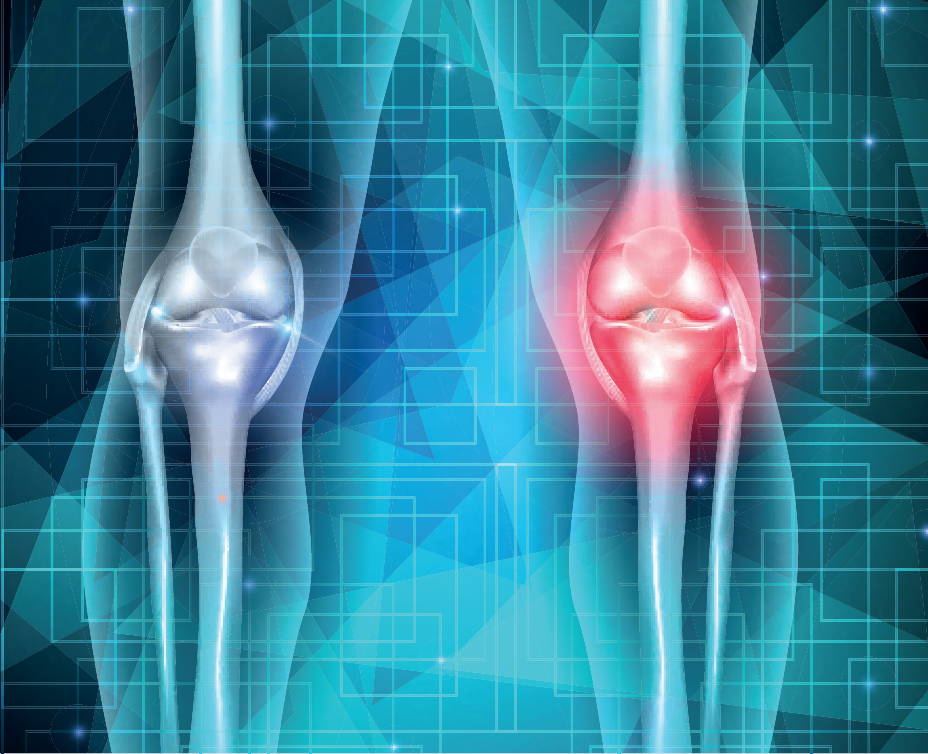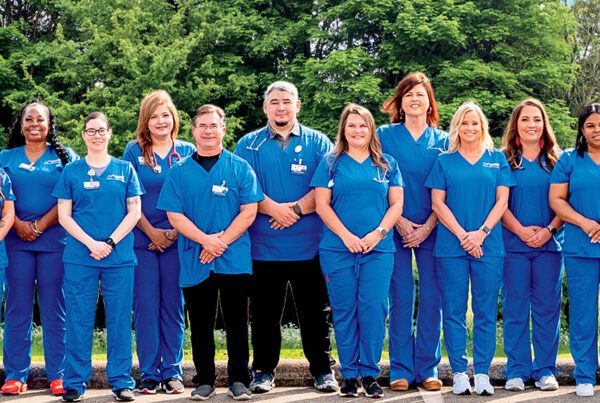With roughly 27 million Americans suffering from some form of osteoarthritis, it’s imperative to spread awareness. Texas MD talks to WellMed‘s Dr. Leigh Romero about osteoarthritis, risk factors and prevention methods.
TxMD: What is osteoarthritis?
Dr. Romero: Osteoarthritis is a degenerative joint disease. Basically, it’s wear-and-tear on your joints. It affects approximately 27 million Americans in some form. The disease can happen at any joint in the body, with weight-bearing joints, such as the knees and hips, being the most commonly affected. Meniscus tears, torn ACLs, and other injuries to the joints can also lead to osteoarthritis. It can also affect the hands since we use them so much.
“Age is a big risk factor. Most people with osteoarthritis are over 65-years-old…previous injuries to the joints are also a risk factor.” – Dr. Leigh Romero
TxMD: How can you tell that a patient has osteoarthritis?
Dr. Romero: Arthritis means joint inflammation, so the main symptoms we hear from patients are pain, swelling, stiffness or limited range of motion in their joints. Sometimes they’ll describe the pain as an ache or a sharp pain. We’ll then ask their pain level based on a pain scale of 0 to 10 while at rest and with activity.
TxMD: What are some of the risk factors for osteoarthritis?
Dr. Romero: Age is a big risk factor. Most people with osteoarthritis are over 65-years-old. Being overweight is another risk factor as it puts extra stress on the weight-bearing joints. As I mentioned earlier, previous injuries to the joints are also a risk factor.
“Osteoarthritis is a degenerative joint disease. Basically, it’s wear-and-tear on your joints. It affects approximately 27 million Americans in some form.” – Dr. Leigh Romero
TxMD: What kind of treatment is available for a patient?
Dr. Romero: The simplest treatment is rest, ice, compression and elevation, which can help reduce the pain. Think of the acronym RICE to remember this remedy. Ice is a natural anti-inflammatory, so putting ice where the pain is after an activity will help. Ace bandages and knee sleeves are examples of compression options. Compression helps reduce the amount of joint swelling, which causes pain. Assisted devices, like a cane or a walker, also help reduce the amount of weight put on the affected extremities. Another way to reduce pain is to lose weight to reduce stress on the joints. Riding an exercise bike or doing pool exercises can help a person lose weight while not putting as much stress on the joints. Over-the-counter medication, like acetaminophen, can help with the pain, while ibuprofen reduces inflammation and pain. An anti-inflammatory gel can also be applied topically on the affected joints to help reduce pain and inflammation. If conservative therapy doesn’t work, then we consider something more aggressive, like steroid injections. This puts a potent anti-inflammatory right into the joint space to calm down the inflammation. Another kind of injection is hyaluronic acid, which is a naturally occurring substance found in the joints. Injecting hyaluronic acid into the affected joints helps stimulate growth of the material which acts as a cushion for the joints.
amount of joint swelling, which causes pain. Assisted devices, like a cane or a walker, also help reduce the amount of weight put on the affected extremities. Another way to reduce pain is to lose weight to reduce stress on the joints. Riding an exercise bike or doing pool exercises can help a person lose weight while not putting as much stress on the joints. Over-the-counter medication, like acetaminophen, can help with the pain, while ibuprofen reduces inflammation and pain. An anti-inflammatory gel can also be applied topically on the affected joints to help reduce pain and inflammation. If conservative therapy doesn’t work, then we consider something more aggressive, like steroid injections. This puts a potent anti-inflammatory right into the joint space to calm down the inflammation. Another kind of injection is hyaluronic acid, which is a naturally occurring substance found in the joints. Injecting hyaluronic acid into the affected joints helps stimulate growth of the material which acts as a cushion for the joints.
TxMD: If left unchecked, what could happen to someone with osteoarthritis aside from constant pain?
Dr. Romero: Osteophytes, which are bony growths better known as bone spurs, can form around the joint and eventually break off into the joint causing more pain. For some people, because the joint has no cartilage and is bone-on-bone, the joint can mechanically lock up where it can’t be moved.
TxMD: Is there any permanent solution for osteoarthritis?
Dr. Romero: Since osteoarthritis can affect any joint, replacing the joint surface will stop it. Certain surgeries for joints can replace the end of the bone with a metal surface, therefore eliminating osteoarthritis for that joint.
TxMD: What should adults nearing 65-years-old do to help avoid osteoarthritis?
Dr. Romero: There are some risk factors you can’t avoid, like being genetically predisposed to osteoarthritis. Repetitive activities that put stress on the joints over the course of several years like running or working on your knees, such as laying tile, can also lead to osteoarthritis. The best things you can do are to manage your weight and avoid injuries to the joints. A good diet, staying hydrated, exercising and getting enough sleep also will help. Having a good attitude and mood has also been proven to help reduce pain. Finally, if you are a smoker, stop! Smoking causes stress on connective tissues, which leads to more pain.
Dr. Leigh Romero, board-certified in family medicine and primary care sports medicine, is a primary care physician at WellMed at Midtown in Austin, TX.







Recent Comments